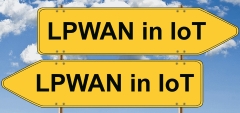How do you achieve a redesign from BLE/WiFi to unlicensed LPWAN or NB-IoT? What are the pitfalls you might encounter during the redesign? Why can you not use any old antenna to do the job? What you have to know to pass radio certification in different regions?
The unlicensed SubGHz bands in Europe, US, Australia, and Japan are regulated differently for TX power level and frequency bands. There are differences in the airtime allowed to be used as well -time on air is a part of the radio protocol. In the first chapter of the redesign, we will have a look at the unlicensed frequency bands and their bandwidth. Furthermore, we will have a look at the NB-IoT bands for NB-IoT. The good news is that NB-IoT in Europe, The United States, Australia, and Japan are like same unlicensed frequency bands in the regions as SubGHz (for bands below 1000 MHz). NB-IoT in Europe is in the same band as LTE 800 (band 20) and GSM 900 (band 8). In the US, it is to be found on band 13. Australia and Japan it is in SubGHz as well. The article will focus on Europe and the United States because those two regions contain most of the 10 biggest economies on this nice blue planet.
Redesigns from a small BLE/Wi-Fi devices to unlicensed or licensed SubGHz are almost impossible because the wavelength at 800 to 1000 MHz is close to three times longer. The antenna structures will be three times bigger and the ground plane has to be three times bigger as well. In my IoT /M2M Cookbook there is a good example of shrinking the groundplane on an open GSM900/GSM1800 PCB antenna design. It underlines the theory with a practical example.
However, the idea is to jump between an unlicensed and a licensed band without to spending too much money. Right now, some people in the unlicensed band explain how easy it is to add a machine to the wireless IoT and some of the customers who believed them are getting a cold shower and need to rework to redesign their LPWAN application. They could try to redesign from unlicensed SubGHz to unlicensed SubGHz but in the worst case they will get a cold shower again. Maybe they have no other chance than to migrate to the licensed band.
The good news is that it is often easy to migrate from unlicensed to licensed band and NB-IoT. If you know the ptifalls at the start, then a device could be designed for both worlds. How to migrate to NB-IoT or to design for both worlds will be explained in the further articles.
The upper text will be reworked by English native speakers in the akorIoT community. Missing information, missing dots or commas, technical or logical mistakes or mistakes by translation are welcome to be advised by email to harald.naumann (at) lte.modem.com
